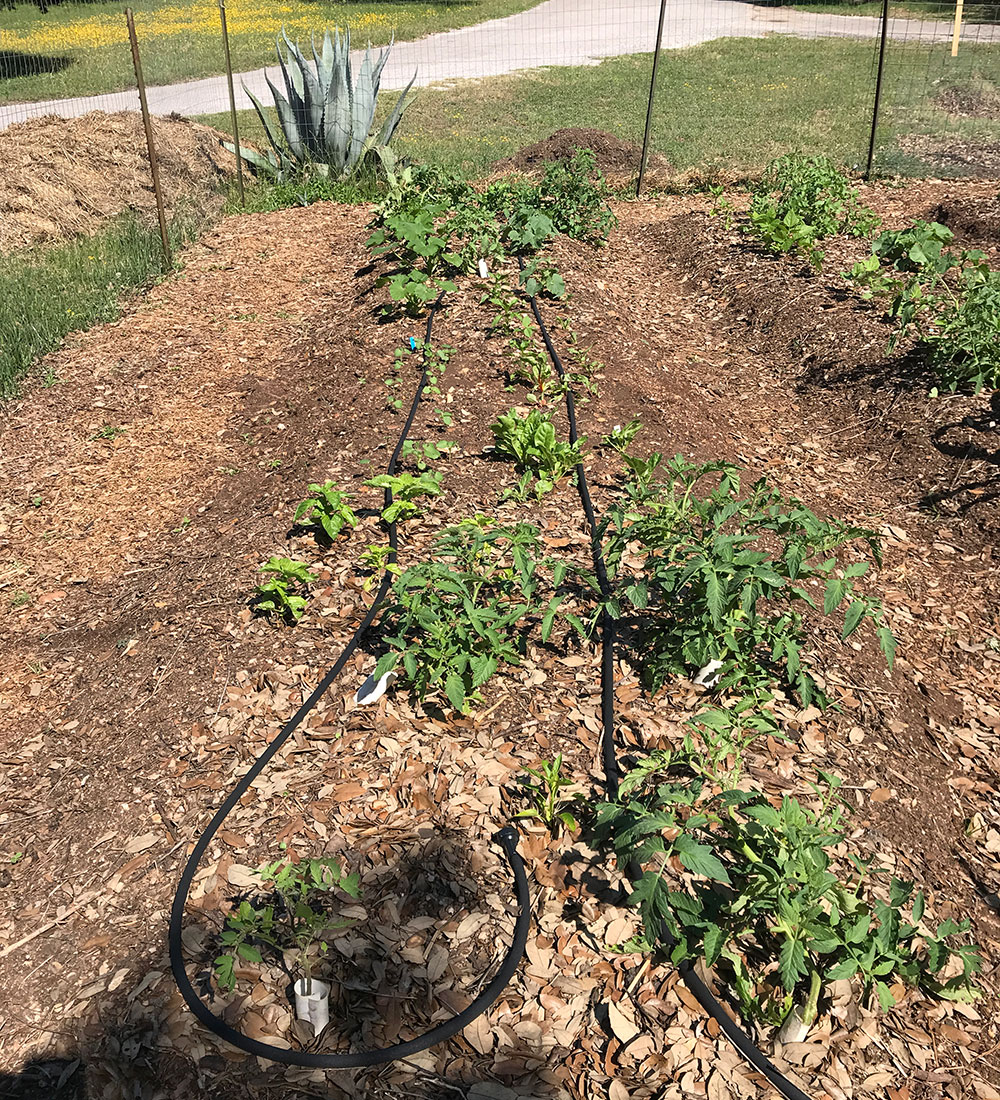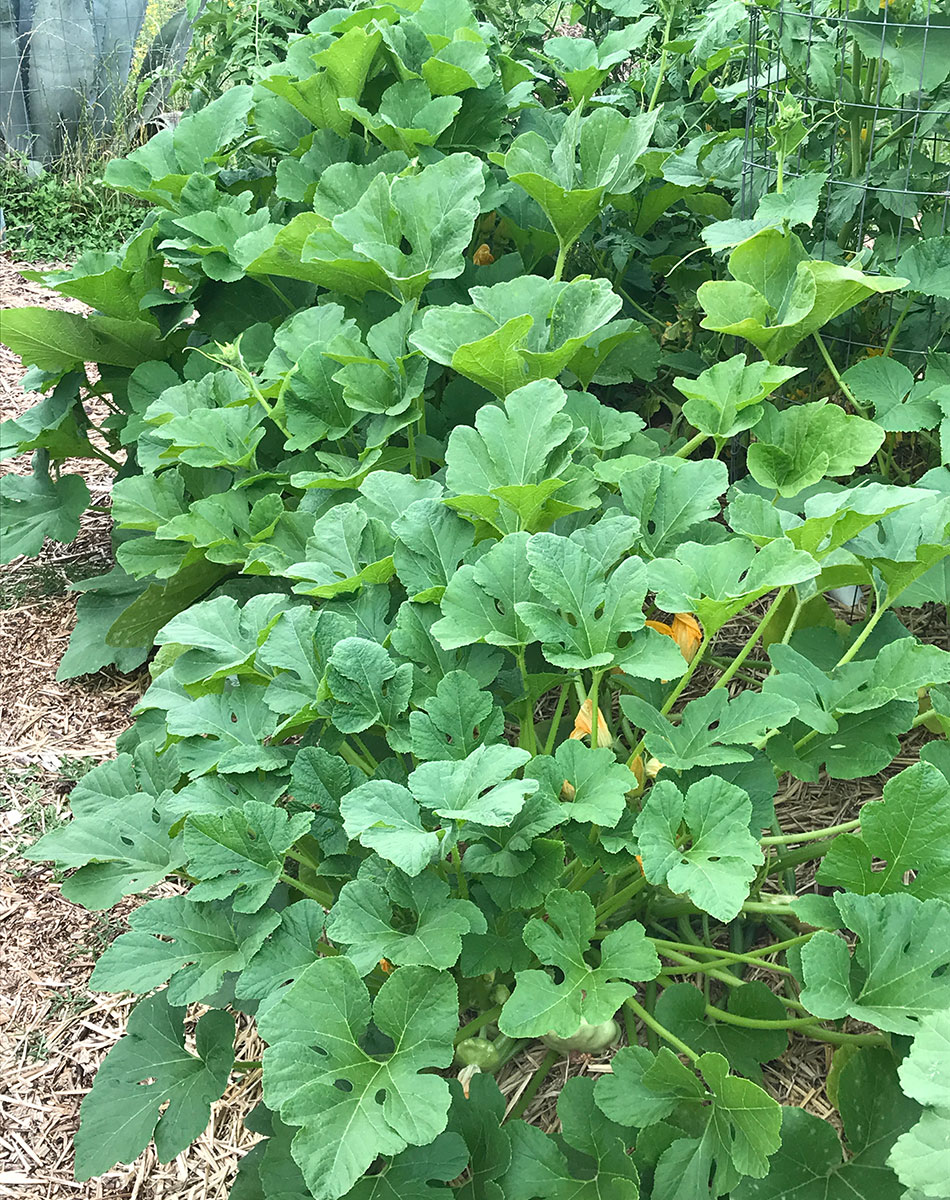
Every climate type presents certain challenges to vegetable gardeners. Here are a few region-specific tips to keep in mind when siting a new vegetable garden in your Southern Plains garden.

Building beds on contour makes use of your garden’s natural curves
If you are creating a new vegetable garden, or even adding to an older one, you will be faced with the choice of how to orient your garden beds in the space. Because of our long, hot summers and the resulting irrigation that is necessary, bed orientation can be an important design consideration. Beds laid out on contour will soak up rainwater flowing down slope and therefore reduce your irrigation needs. To visualize this, think of a bed on contour as following the curves of a topographic map. The bed will essentially be at a 90° angle to rainfall flowing downhill.
Permaculture, a design framework for sustainable gardening and living, places a major emphasis on such contour plantings. If your garden site is on a hill, the contour may be obvious, but even sites that seem perfectly flat never are! Before you build your garden beds, observe the site during a heavy rainfall so you can observe how the water moves across the surface of the ground and how your garden beds could best intercept and trap that water. Contour placement allows garden soil to soak up rain and store it for up to several days or more. That means less watering for you!

Easy access to water is paramount on hot summer days
Speaking of watering, I can’t emphasize this point enough: when designing a new vegetable garden in our region, make sure you have easy access to water. It’s easy to say to yourself, “I’ll just water this bed by hand when it needs it.” Our summers are scorchers. Do not plan to hand-water your garden. You will not want to be hauling heavy watering cans out to your vegetable garden when it is 100°F in July and it hasn’t rained in weeks. Make sure you have access to a hose and, ideally, to a more hands-off watering system like drip irrigation or simple soaker hoses with a timer. The time to think about water access is when you’re first building your garden.

Afternoon shade still yields full sun exposure
Most vegetable garden plants require full sun, which really just means six or more hours of sun per day. “Full sun” does not necessarily mean the full 14 hours of sunlight that we get per day during the summer in the Southern Plains! The summer sun can be especially brutal in the late afternoons in our region, both for people and for plants. Many garden vegetables (and gardeners!) appreciate some shade after about 3:00 pm. So if your garden site has trees on the western edge that provide some shade in the late afternoon, that’s just fine—and even preferable. Look at your garden and determine which beds receive the most sun and when. Sun-hungry plants like peppers, tomatoes, and okra will do best with the most hours of exposure; greens such as Swiss chard, lettuce, and herbs can do with much less.

Plan for different angles of sunlight at different times of the year
In our region we are lucky that we can garden year-round, or nearly all year-round. Because of that, you’ll want to evaluate your potential garden site for both spring and summer sun versus fall and winter sun. Since we are in the northern hemisphere, the sun moves from east to west across the southern half of our sky every day. At midsummer, the sun will follow an arc high in the southern sky, with the sun passing almost directly overhead at noon. In the wintertime, the sun’s arc stays low in the southern sky. It’s important to evaluate your vegetable garden site with these seasonal sun exposures in mind. For example, I have two vegetable gardens at my house, and both of them work for spring and summer gardening. One of them, however, is too shady for fall and winter gardening due to there being too many trees along the southern and western edges that block the low winter sun.
I hope these siting tips help you develop a successful new vegetable garden, regardless of which crops you choose to grow.
—Karen Beaty is a forestry specialist at the city of Austin’s Wildland Conservation Division.
Fine Gardening Recommended Products

Lee Valley Large Gardener's Wash Basket
Fine Gardening receives a commission for items purchased through links on this site, including Amazon Associates and other affiliate advertising programs.

Johnny’s Selected Seeds Connecta® Cultivation Kit
Fine Gardening receives a commission for items purchased through links on this site, including Amazon Associates and other affiliate advertising programs.

Lee Valley Mini Garden Shear Set
Fine Gardening receives a commission for items purchased through links on this site, including Amazon Associates and other affiliate advertising programs.



















Comments
Log in or create an account to post a comment.
Sign up Log in